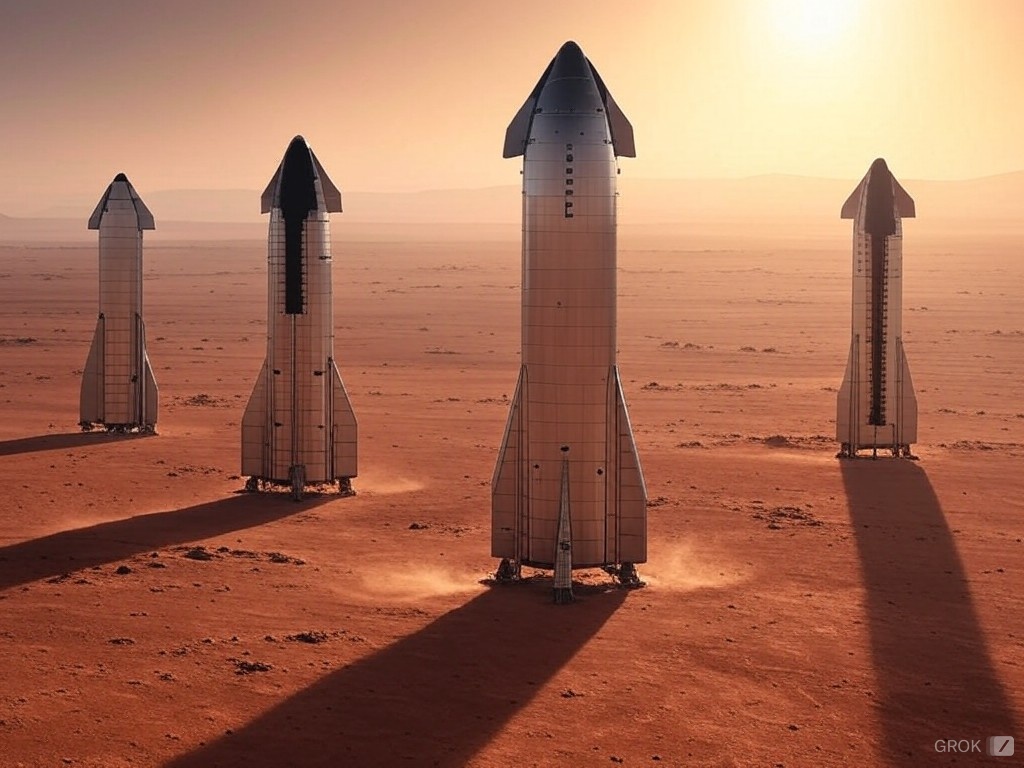SpaceX's Mars Plans: Unmanned & Manned Missions – A Giant Leap for Humankind?
SpaceX, the innovative aerospace manufacturer and space transportation services company founded by Elon Musk, has boldly set its sights on Mars. Their ambitious plans encompass both unmanned and manned missions, aiming to eventually establish a self-sustaining human colony on the Red Planet. This article delves into the intricacies of SpaceX's Mars colonization strategy, exploring the timelines, technologies, and challenges involved in this monumental undertaking.
Unmanned Missions: Paving the Way for Human Exploration
Before humans can set foot on Mars, a significant amount of groundwork needs to be laid. SpaceX's unmanned missions are crucial for this preparatory phase. These missions are designed to:
- Test Starship's capabilities: Starship, SpaceX's fully reusable launch and landing system, is the cornerstone of their Mars ambitions. Unmanned missions will rigorously test Starship's performance in the harsh Martian environment, including landing, refueling, and overall survivability.
- Establish resource depots: Establishing depots of essential resources like water ice, propellant, and building materials on Mars is vital for long-term human habitation. Unmanned missions will scout locations, assess resource availability, and lay the groundwork for future extraction and utilization.
- Deploy infrastructure: These missions will focus on deploying basic infrastructure components, including power generation systems, habitat modules, and communication arrays, to pave the way for human arrival.
- Conduct scientific research: Unmanned rovers and landers will gather crucial scientific data about Martian geology, climate, and potential signs of past or present life, providing invaluable insights for future human exploration.
Starship: The Key to Mars Colonization
SpaceX's Starship is a game-changer in space exploration. Its massive payload capacity and reusability significantly reduce the cost of space travel, making a Mars mission both feasible and more sustainable. Its design incorporates advanced technologies, including:
- Raptor engines: These methane-fueled engines provide unparalleled thrust and efficiency.
- Stainless steel construction: This robust material is chosen for its durability and ability to withstand the extreme temperatures of space.
- Rapid reusability: Starship is designed for rapid turnaround times, minimizing the time and cost between missions.
Manned Missions: The Next Giant Leap
SpaceX's ultimate goal is to establish a self-sustaining city on Mars. Their manned missions will build upon the foundation laid by the unmanned missions, gradually increasing human presence and establishing permanent infrastructure. Challenges associated with manned missions include:
- Radiation protection: Protecting astronauts from harmful radiation during the long journey to Mars is paramount.
- Life support systems: Developing robust and reliable life support systems to ensure astronaut survival is critical.
- Psychological factors: The psychological impact of long-duration space travel on astronauts needs careful consideration.
- Resource utilization: Efficiently utilizing Martian resources for food production, water recycling, and oxygen generation will be vital for long-term sustainability.
Timeline and Challenges: A Long-Term Vision
While SpaceX has expressed ambitious timelines, the reality of Mars colonization is a complex and long-term endeavor. Numerous technological, logistical, and financial challenges lie ahead. However, the advancements in rocket technology and the overall commitment to this ambitious goal suggest that it is not as far-fetched as it may seem.
Conclusion: A Bold Future on Mars?
SpaceX's plans for Mars are undeniably ambitious, but they represent a significant leap forward in humanity's exploration of the cosmos. The combination of innovative technology, bold vision, and relentless dedication may just make the colonization of Mars a reality within this century. The next few years will be crucial in observing the progress of their unmanned missions, providing invaluable data and paving the way for what could be humanity's greatest achievement.
Keywords: SpaceX, Mars, Mars colonization, Starship, Elon Musk, space exploration, unmanned missions, manned missions, space travel, reusable rockets, Raptor engines, Mars exploration, Red Planet, future of space travel.
